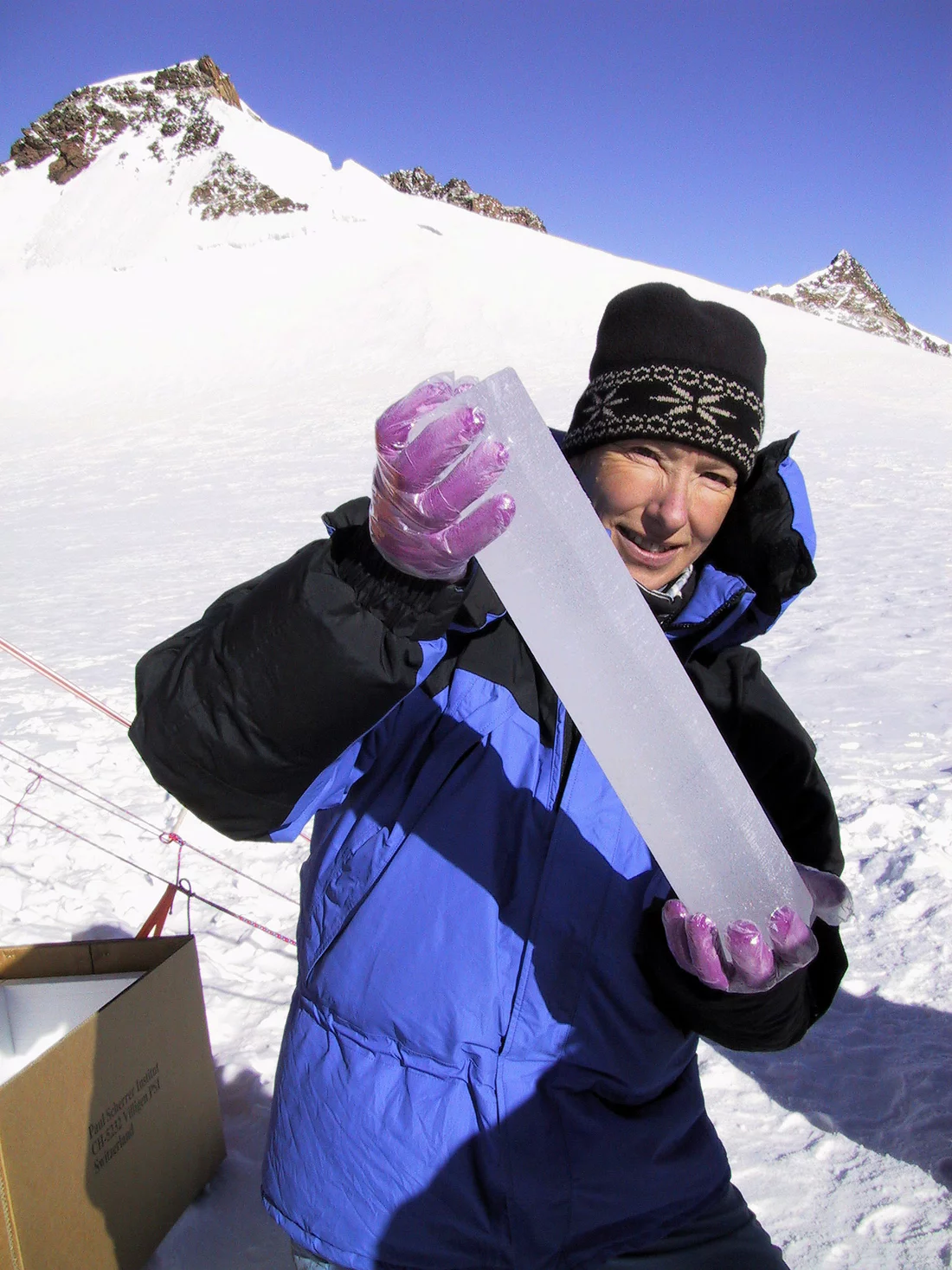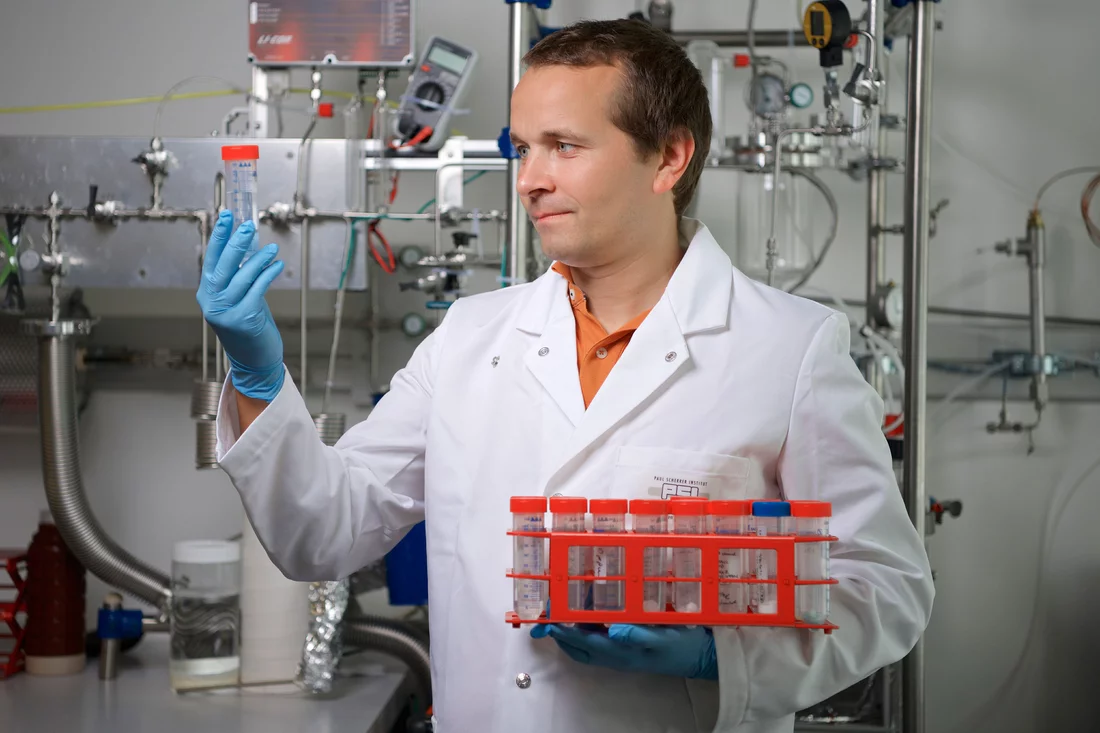Analysis of ice cores delivers continuous data for the first time on industrial soot from 1740 to today
In the first half of the 19th century, a series of large volcanic eruptions in the tropics led to a temporary global cooling of Earth's climate. It was a natural process that caused Alpine glaciers to grow and subsequently recede again during the final phase of the so-called Little Ice Age. This has now been proven by PSI researchers, on the basis of ice cores. Up to now, it was hypothesised that industrial soot in the second half of the 19th century had triggered the rapid melting of glaciers occurring at that time. The first-ever analysis of the amount of soot (also called black carbon) locked in the ice and thus historically archived now contradicts this assumption. The resulting continuous timeseries of soot concentrations will, in addition, help researchers in the future to improve climate model simulations by enabling them to use experimental data. The results were now published in the scientific journal The Cryosphere.
Images of Alpine glaciers from the 1850s compared to the present day are often used in order to visualise anthropogenic climate change. This is wrong, however, as researchers have now proven on the basis of data from ice cores. Scientists associated with Michael Sigl of PSI analysed atmospheric pollutants archived in the ice at different depths, with a focus on the amounts of industrial soot. Thus they created the first continuous data series for central Europe for the period from the 1740s to today on the amount of industrial soot in the atmosphere.
These data clearly show that industrial soot can hardly be responsible for the melting of the Alpine glaciers at the time, taking place mainly between 1850 and 1875. By 1875, the glacier retreat under way then was already around 80 percent complete
, Sigl says. But it was not until 1875 that the amount of industrial soot in central Europe exceeded the levels of black carbon naturally present in the atmosphere. Sigl clarifies: It's only in the last 20 percent of that episode of glacier retreat in the 19th century that the soot could have had an influence.
The first half of the 19th century bore the stamp of several large volcanic eruptions in the tropics; their emissions of sulphur particles led to a temporary global cooling. During this final phase of the so-called Little Ice Age, cooling culminated, which caused Alpine glaciers to strongly advance. Up to now it had been thought that their retreat starting in the 1860s could be traced back to the beginning of industrialisation. But the PSI results now clearly contradict this hypothesis: It's simply a matter of a retreat to the glaciers' previous undisturbed extent.
1850 is not suitable as a reference year for climate models
The question of when the human influence on climate begins is still open
, Sigl says. And this beginning, the study shows, does not necessarily give suitable reference values for climate models due to other factors. Sigl regards the 1750s as a more suitable pre-industrial reference time – that is, a point before the last and most extreme cold phase of the Little Ice Age. Previously too, whenever the thin state of data for past centuries has made it possible, 1750 has been accepted as a reference year for climate modelling when it comes to comparing data from pre-industrial times with those after the beginning of industrialisation. That makes sense, since the climate in the middle of the 19th century was not the primordial one, as we now clearly see in our data.
Future climate models could factor in the experimental soot data
In model calculations on climate change, the trend in the amount of soot in the atmosphere over time is one of many variables considered. So far, though, the modellers have been using an estimated value for the respective amounts of soot
, Sigl says. For the 19th century in particular, estimates of the individual industrial nations have formed the basis for this. Up to now, a linear increase in the amounts of soot in the atmosphere has been assumed for the second half of the 19th century, according to Sigl. It can now be proven, thanks to the ice core studies by Sigl and his collaborators, that this does not correspond to reality. Therefore the researchers are advocating the inclusion of experimental soot data in future model calculations. These models in turn form an important part of the report issued roughly every seven years by the recognised advisory authority on global climate, the IPCC, the Intergovernmental Panel on Climate Change.
In the IPCC report, the model calculations that mathematically simulate the climate since 1850 have a central role
, emphasises Margit Schwikowsi, head of the project within which the investigations were carried out. With our research, we have now contributed to enabling the scientific groups that produce such climate models to draw on experimental data in the area of industrial soot.
Text: Paul Scherrer Institute/Laura Hennemann
About PSI
The Paul Scherrer Institute PSI develops, builds and operates large, complex research facilities and makes them available to the national and international research community. The institute's own key research priorities are in the fields of matter and materials, energy and environment and human health. PSI is committed to the training of future generations. Therefore about one quarter of our staff are post-docs, post-graduates or apprentices. Altogether PSI employs 2100 people, thus being the largest research institute in Switzerland. The annual budget amounts to approximately CHF 390 million. PSI is part of the ETH Domain, with the other members being the two Swiss Federal Institutes of Technology, ETH Zurich and EPFL Lausanne, as well as Eawag (Swiss Federal Institute of Aquatic Science and Technology), Empa (Swiss Federal Laboratories for Materials Science and Technology) and WSL (Swiss Federal Institute for Forest, Snow and Landscape Research).
(Last updated in May 2018)
Additional information
http://psi.ch/RB4f - Frozen memory of the climate: Background texthttp://psi.ch/hyYG - Historical copper, captured in ice: Media release from 1 February 2017
Contact
Prof. Dr. Margit SchwikowskiHead of Laboratory of Environmental Chemistry
Paul Scherrer Institute, Forschungsstrasse 111, 5232 Villigen PSI, Switzerland
Telephone: +41 56 310 41 10
E-mail: margit.schwikowski@psi.ch [German, English]
Original Publication
19th century glacier retreat in the Alps preceded the emergence of industrial black carbon deposition on high-alpine glaciersM. Sigl, N. J. Abram, J. Gabrieli, T. M. Jenk, D. Osmont, M. Schwikowski
The Cryosphere, 16 October 2018 (online)
DOI: 10.5194/tc-12-3311-2018



